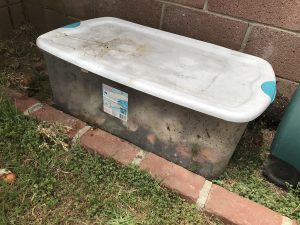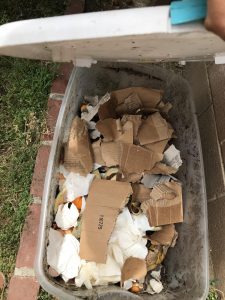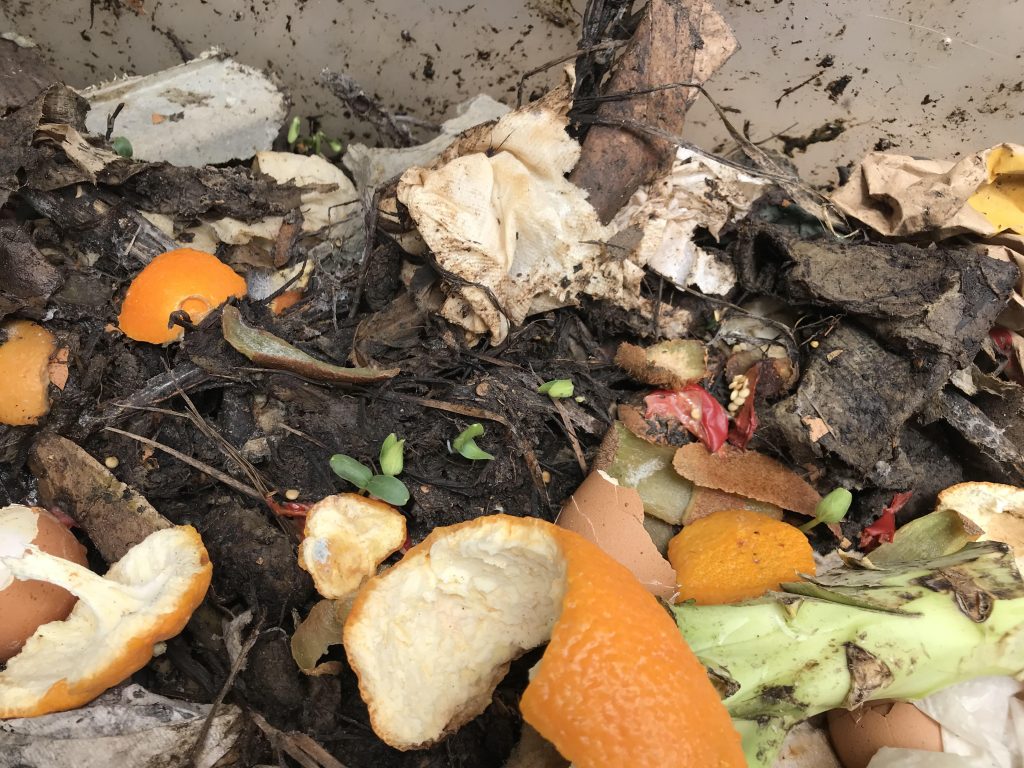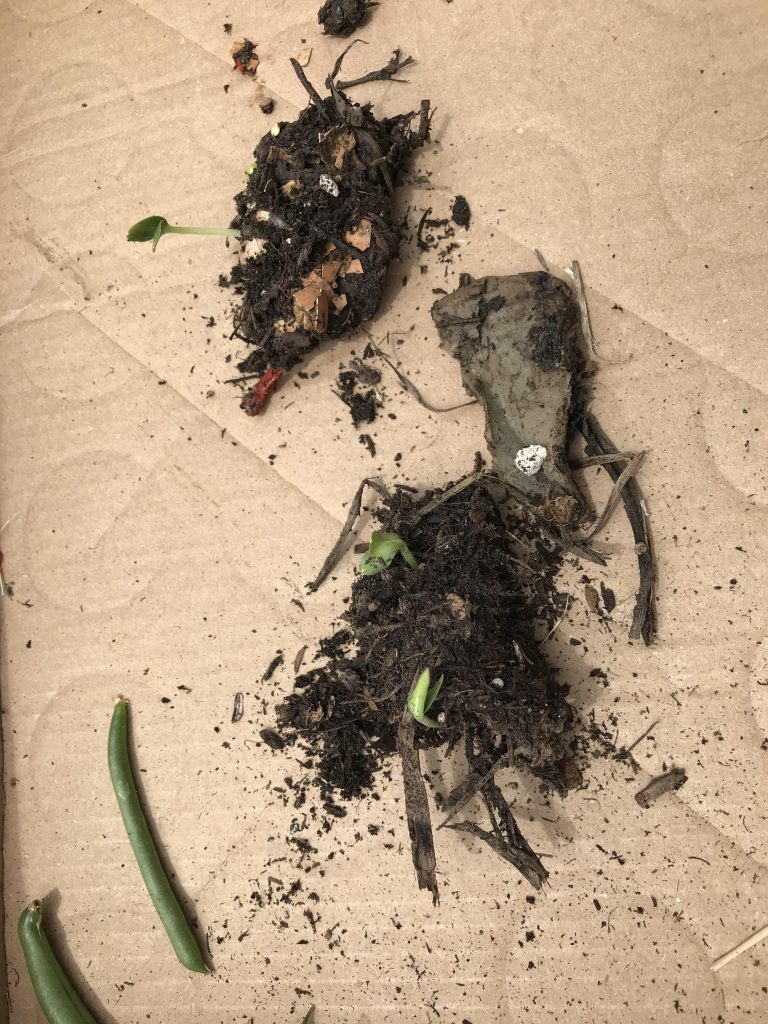
Composting: A Simple Way to Add Rich Soil to your Garden
When I restarted my garden a couple of months ago, I also put in a makeshift compost bin. I’ve never composted before, but after reading about it in the gardening book The Urban Homestead, I decided to start composting myself. I realized that it’s not only easy to start composting, but it so rich in nutrients. Composting is virtually effortless to do, and here is how to get started.
All you really need is an enclosed bin. I used an old plastic tub with a lid. You want to put some holes in the bin because the soil needs to aerate, or else it would get too soggy. No need to make the giant holes, about ¼” inch wide should be fine. My power drill didn’t come with a bit set at the time, so I was only able to make super tiny holes. I made a a grid of holes on all four sides of the tub. And that was about it!

Composting is made up of “green” matter, which consists of nitrogen rich material, and “brown” matter that consists of carbon rich material. The “green” matter would be your kitchen scraps, fresh yard trimmings, as well as coffee grinds. The “brown” matter could be newspapers, cardboard, dead leaves, or twigs.
The big no-no’s that you shouldn’t put in your compost are things such as meat, dairy, oils, glossy-coated paper, and diseased plants. You may also want to limit the amount of sugary stuff such as pastries or breads you put in the compost since they can attract pests or animals.

Since I started composting, I’ve been putting in half and half with “green” and “brown” material. After a few weeks the bottom layer would get pretty mucky, so I would turn over the compost. Now it’s less soggy, but it is more like pasty clumps. The consistency we want would be similar to crumbled chocolate cake. There could be a couple of factors as to why mine is pasty. It could be that it is still early in the process, as it takes about several months to a year for all the matter to fully decompose into proper compost. Another reason could be that I didn’t drill big enough holes in the bin for aeration. For now I won’t do anything to the bin; the bottom layers of it appear to have decomposed nicely. I plan on putting holes at the bottom of the bin in case earthworms want to make there way into to bin and start feeding. The fecal matter they leave behind are the holy grail for a gardener.
After a couple of weeks, I noticed a few mysterious sprouts in the bin. The bin created a type of greenhouse effect that allowed the seeds to germinate and sprout. I’m not sure if this means I’m doing a good job or not, but at least I know it’s warm enough that seeds are germinating. In fact, I took some of the sprouts and planted them in some containers. I realized later that they were cantaloupe sprouts in the compost. They’re still growing and doing quite well.



If you find that your compost is mucky and smelly, don’t give up. The best way to remedy that is by putting a bit more brown stuff than the green stuff. For instance when mine was getting super soggy, I put some peat moss in it (a great source of carbon material) which not only stabilized the moisture in the bin but also made the compost smell fresher. Peat moss is also very acidic, which is great when it comes to quicker decomposition. Disclaimer: peat moss is not sustainable material, so don’t go buying it all willy-nilly just to use for compost. You can just add some excess cardboard or paper towels instead.
There’s not much pain into composting and if you care about reducing waste, then this is an easy way to go about it. And if you want to start gardening, then just starting to compost should be a no-brainer. The process is like magic to me. It is a complete transformation from food that had served to nourish me has changed into something completely different to now give nourishment back into the earth. One of the many wonders of nature’s processes.

